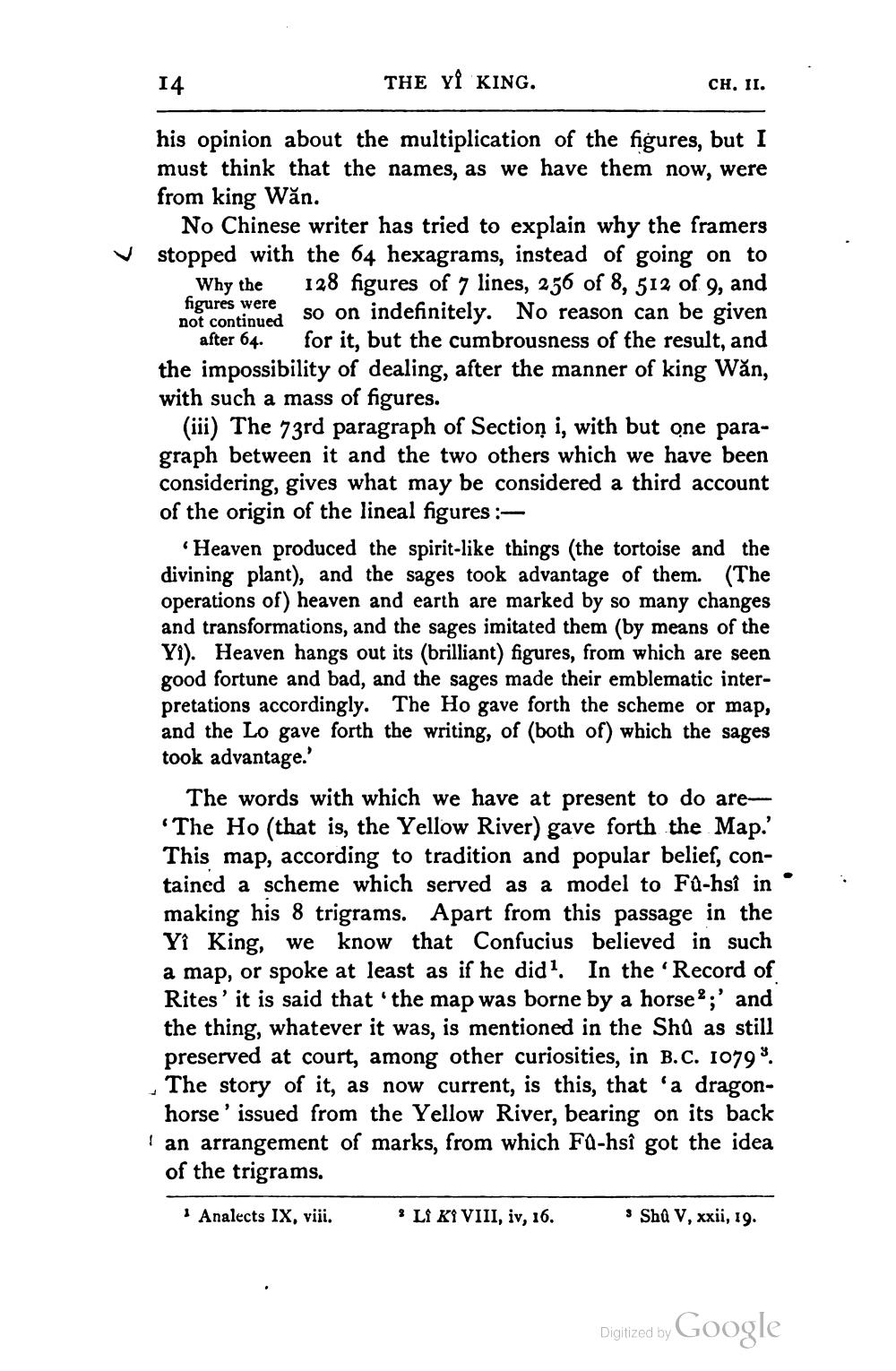________________
14
THE YÎ KING.
CH, II.
v
his opinion about the multiplication of the figures, but I must think that the names, as we have them now, were from king Wăn.
No Chinese writer has tried to explain why the framers stopped with the 64 hexagrams, instead of going on to
Why the 128 figures of 7 lines, 256 of 8, 512 of 9, and figures were so on indefinitely. No reason can be given
after 64. for it, but the cumbrousness of the result, and the impossibility of dealing, after the manner of king Wăn, with such a mass of figures.
(iii) The 73rd paragraph of Section i, with but one paragraph between it and the two others which we have been considering, gives what may be considered a third account of the origin of the lineal figures :
Heaven produced the spirit-like things (the tortoise and the divining plant), and the sages took advantage of them. (The operations of) heaven and earth are marked by so many changes and transformations, and the sages imitated them (by means of the Y1). Heaven hangs out its (brilliant) figures, from which are seen good fortune and bad, and the sages made their emblematic interpretations accordingly. The Ho gave forth the scheme or map, and the Lo gave forth the writing, of (both of) which the sages took advantage.'
The words with which we have at present to do are"The Ho (that is, the Yellow River) gave forth the Map.' This map, according to tradition and popular belief, contained a scheme which served as a model to Fa-hsî in making his 8 trigrams. Apart from this passage in the Yỉ King, we know that Confucius believed in such a map, or spoke at least as if he did. In the 'Record of Rites' it is said that the map was borne by a horse? ;' and the thing, whatever it was, is mentioned in the Shů as still preserved at court, among other curiosities, in B.C. 10793 - The story of it, as now current, is this, that 'a dragon
horse' issued from the Yellow River, bearing on its back ! an arrangement of marks, from which Fd-hsî got the idea
of the trigrams.
Analects IX, viii.
? Li Ki VIII, iv, 16.
Shů V, xxii, 19.
Digitized by Google




